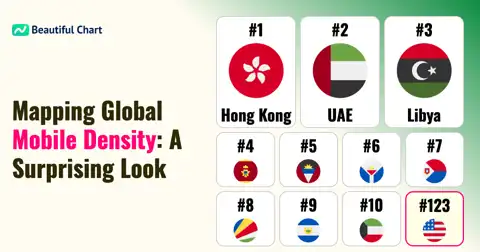This chart compares the GDP of South Korea and Southeast Asian countries from 1980 to 2024. GDP is a crucial indicator of economic growth for each country. The chart allows for a clear comparison of how economic growth has evolved in South Korea and Southeast Asia over this period.
GDP (Gross Domestic Product) refers to the total value of goods and services produced within a country over a specific period. It is a key indicator used to assess the economic growth and overall health of a nation's economy.
1980s
In the 1980s, countries in Southeast Asia such as Indonesia, Republic of Korea, Philippines, Viet Nam, and Thailand showed an overall upward trend in GDP.
In 1980, Indonesia's GDP was $99.296 billion, while Republic of Korea's was $65.368 billion. Indonesia's economic growth relied heavily on oil and natural gas exports, while Republic of Korea grew rapidly through industrialization and an export-oriented economic policy. The Philippines recorded a GDP of $37.082 billion, Viet Nam $35.357 billion, and Thailand $33.422 billion.
By 1984, Republic of Korea's GDP had increased to $97.511 billion, primarily due to advancements in manufacturing and electronics industries. Indonesia's GDP in the same year was $107.218 billion, driven by rising oil prices. Viet Nam's GDP remained relatively low at $6.117 billion but began implementing economic reforms for growth.
In 1986, Republic of Korea's GDP surged to $116.836 billion, with significant contributions from the export of automobiles and electronics. In contrast, Indonesia's GDP fell to $101.220 billion due to declining international oil prices and economic restructuring.
1990s
In the 1990s, Republic of Korea continued its growth trajectory. In 1990, its GDP was $283.365 billion, with substantial growth in the semiconductor and IT industries. Indonesia recorded a GDP of $138.258 billion, benefiting from resource exports and infrastructure investments.
By 1994, Republic of Korea's GDP reached $463.432 billion, maintaining high growth rates until the Asian financial crisis. Indonesia's GDP was $213.727 billion, leveraging its resource-based economy for growth.
Despite the Asian financial crisis in 1997, Republic of Korea's GDP was $570.594 billion, driven by strong government economic reforms and restructuring. Indonesia, however, experienced a significant drop to $260.680 billion, heavily impacted by the crisis.
2000s
In the early 2000s, Republic of Korea's GDP was $576.483 billion, with notable growth in the IT and automotive sectors. Indonesia maintained steady economic growth with a GDP of $179.482 billion.
By 2005, Republic of Korea's GDP had risen to $934.708 billion, maintaining stable growth before the global financial crisis. Indonesia recorded a GDP of $310.920 billion, supported by resource exports and a growing domestic market.
Despite the global financial crisis in 2008, Republic of Korea's GDP was $1.049 trillion, showing a quick recovery. Indonesia maintained steady growth with a GDP of $558.291 billion.
2010s
Entering the 2010s, Republic of Korea's GDP was $1.143 trillion, continuing its growth with strong contributions from semiconductors, automobiles, and IT. Indonesia's GDP was $755.094 billion, driven by resource development and infrastructure investment.
In 2015, Republic of Korea's GDP reached $1.466 trillion, benefiting from the boom in major export industries. Indonesia's GDP was $860.854 billion, supported by an expanding domestic market and resource exports.
By 2019, Republic of Korea's GDP was $1.651 trillion, with ongoing industrial development and technological innovation. Indonesia recorded a GDP of $1.119 trillion, reflecting efforts in resource development and economic diversification.
2020s
In the early 2020s, despite the COVID-19 pandemic, Republic of Korea's GDP was $1.644 trillion, supported by effective pandemic control and economic support policies. Indonesia's GDP was $1.059 trillion, maintaining stable economic growth amid the pandemic.
In 2023, Republic of Korea's GDP reached $1.712 trillion, showing a recovery post-pandemic. Indonesia's GDP was $1.371 trillion, driven by economic recovery and resource exports.
The GDPs of Republic of Korea and Indonesia have evolved due to different economic structures and growth drivers. Republic of Korea has consistently grown through industrialization, technological innovation, and export-oriented policies, while Indonesia has leveraged resource development and infrastructure investments for its economic growth. Both countries faced impacts from the COVID-19 pandemic but showed resilience and recovery through effective economic policies.
| Rank | Name | Indicator |
|---|---|---|
1 | $ 1T 760B | |
2 | $ 1T 475B | |
3 | $ 548B 890M | |
4 | $ 525B 227M | |
5 | $ 471B 516M | |
6 | $ 465B 814M | |
7 | $ 445B 519M | |
8 | $ 68B 6M | |
9 | $ 45B 150M | |
10 | $ 15B 510M | |
11 | $ 15B 190M | |
12 | $ 1B 992M |





